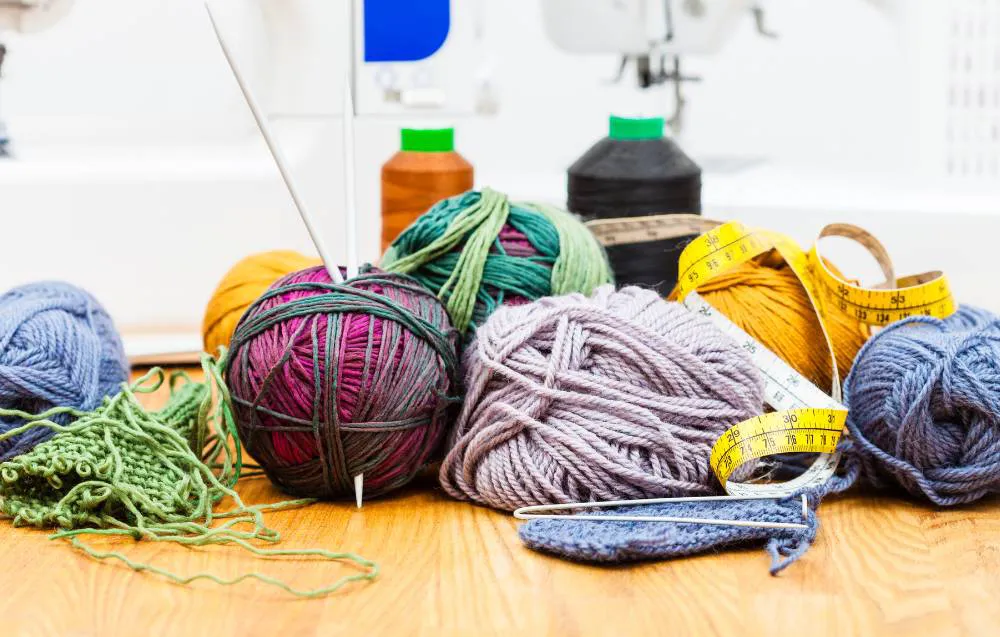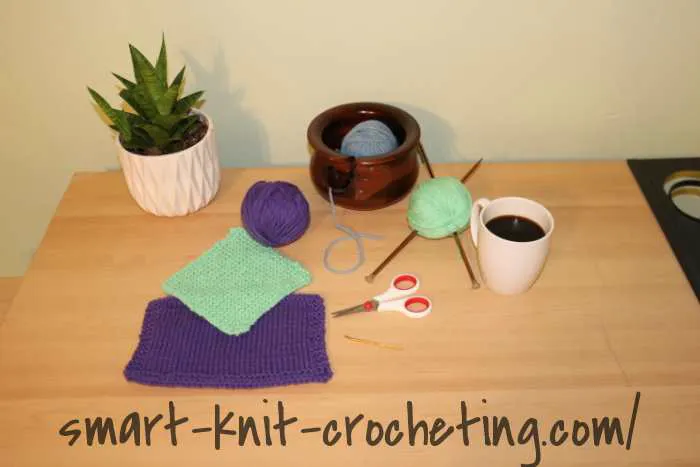Knitting Terms for Beginners: A Comprehensive Guide to Getting Started
Master the Basics of Knitting with This Guide to Essential Terms
Master the Basics of Knitting with This Guide to Essential Terms
Final Tips
When you’re learning to knit, the terminology can feel like a new language, but with time and practice, it becomes second nature. One of the best ways to get comfortable with knitting terms is to use them regularly.
As you work through patterns, take the time to look up any abbreviations or techniques that are unfamiliar. I found it helpful to keep a list of terms in a small notebook nearby when I was starting out—it gave me something to refer to without feeling stuck.
Another good tip is to practice with small projects that incorporate different stitches and techniques. I love knitting dishcloths, scarves, and simple hats as they are small, useful projects to try out new skills in manageable amounts. You’ll also get more familiar with how patterns are written and how the instructions translate into physical stitches. The more you experiment, the more natural the terminology will feel.
Don’t forget that the knitting community is full of resources. I find online videos on YouTube and forums especially helpful in explaining a tricky term or technique. Patterns often seem more intimidating than they actually are because of unfamiliar words, but once you break it down, everything becomes a lot clearer. The key is to be patient with yourself and to approach learning to knit as a gradual process.
Conclusion
Learning the words used in knitting is an important step in becoming a more confident and capable knitter. When you understand the terms and symbols used in patterns, you unlock the ability to tackle more complex projects and experiment with new techniques. I know how overwhelming it can feel at first—there’s a lot to absorb—but with time, it gets easier. Just remember that every experienced knitter was once in your shoes, learning the same basics and figuring things out one stitch at a time.
By familiarizing yourself with the common terms we’ve covered in this guide, you’ll begin to view patterns in a new light. Instead of feeling that they are a jumble of abbreviations and symbols, they’ll become clear instructions that guide you through each project. And with every new project, your knowledge and skill will only grow, making knitting a more enjoyable and rewarding hobby.
K
KAL (Knit-A-Long): A series of videos used to walk viewers through a particular pattern, step-by-step. Many knit-a-longs will keep the pattern a mystery until the end. Others are used to teach beginners the necessary techniques for knitting a particular type of garment.
KIP or kipping: Knitting in public.
Kitchener Stitch: A method of seaming used to join two pieces of knitting together or to join to ends of the same piece of fabric. This seaming method is often used with stockinette stitch. - Learn More
Knitwise (As If to Knit):Often used when talking about slipped stitches or when giving detailed instructions on a particular increase or decrease, this term refers to inserting your working needle in a way that puts the leading leg of your yarn on the right-hand side of your needle.
C
Cable Needle (cn): Cable needles are special types of needles used in knitting to hold live stitches off the needles during the cable knitting process. This essentially will allow you to knit your stitches in a different order, creating the cables themselves. Many knitters use DPNs (double pointed needles) for this.
Circular Knitting Needles: Circular knitting needles are a type of knitting needle where two separate needles are attached with a cord. This allows you to knit larger pieces in the round without using DPNs as well as to knit larger flat items that are too wide for regular, straight needles. - Learn More
Combination Knitting (Method): Combination knitting is a method that combines aspects of both Eastern and Western knitting methods. There are many things that make this method unique, but the most prominent one is that knit stitches are worked through the back loop and purl stitches are worked through the front loop; as such, the leading and lagging legs are not uniformly placed on the needles, like in Eastern and Western knitting. - Learn More
| Western | Eastern | Combination | |
| Knit Stitches | Leading leg in front | Leading leg in back | Leading leg in front |
| Purl Stitches | Leading leg in front | Leading leg in back | Leading leg in back |
| Yarn Wrap | Counter-clockwise (for right-handed) | Clockwise (for right-handed) | Counter-clockwise for knit (right-handed) Clockwise for purl (right-handed) |
| Stitches | Worked through front loop | Worked through back loop | Worked through back loop for knits Worked through front loop for purls |
| Twisted Stitches | Worked through back loop | Worked through front loop | Worked through front loop for knits Worked through back loop for purls |
Continental Knitting (Picking): A style of knitting that involves holding the working yarn in your non-dominant hand. This allows you to hold the tension in your yarn in a different hand than the one that's actually maneuvering the working needle. Many knitters find this an easier and faster way of knitting. - Learn More
Common Measurement Terms
As an expert knitter, I’ve come to appreciate the importance of understanding various measurement terms that guide our knitting journey. My fellow knitting companion, let me help you get a handle on these standard measurement terms.
Firstly, let’s talk about gauge. Gauge is the number of stitches and rows over a specific area, usually measured in inches or centimeters. A consistent gauge is crucial to ensure your lovely knitted creations fit precisely as intended.
Next are stitches (sts), the foundation of all knitting projects. Following a pattern, you’ll find many stitch abbreviations like k for knit or p for purl. Sometimes, these stitches are accompanied by numbers, such as K1 and P1, indicating the number of stitches you should knit or purl.
In some patterns, you might be instructed to “hold the yarn together.” It means you’ll be knitting with multiple strands of yarn simultaneously. It’s a fantastic technique to create a luxurious, cozy thickness in your fabric, ideal for those warm, snug items we cherish on chilly evenings.
Lastly, “blocking” is the magical finishing touch to your knitted pieces. Blocking is the revered process of shaping and setting your knitting using water or steam. This spa-like treatment for your creation transforms your work into a true masterpiece.
Understanding these terms and techniques enhances your knitting experience, allowing you to craft confidently and precisely. Embrace these concepts, and watch as your knitting journey flourishes into something special.



Tegs:
Search
Recent Posts
-
Mastering the Yarn Over Technique in Knitting: A Step-by-Step Guide
Apr 14 2025
-
Master the Rectangle Loom: Techniques and Patterns for Beginners
Apr 14 2025
-
Graphic Knitting Patterns: Add a Pop of Art to Your Knitwear
Apr 14 2025
-
Minnesota Knitting Mills: Explore the Legacy of Knitting and Yarn Production in the State
Apr 14 2025
Subscribe to Updates
Get the latest posts and fashion insights directly in your inbox.